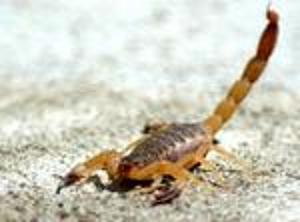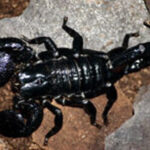Basil is one of the most popular herbs and also one of the easiest to grow. There are somewhere between 40 and 200 varieties out there, but less than 20 are really popular today.
An annual plant, basil was originally from the tropical Old World. In the east it was considered sacred. For a long time in Europe it was held to be poison and that it bred scorpions- even smelling it could cause a scorpion to form in your brain. Not all of Europe thought basil was a bad thing, however; in Italy, a pot of basil on the balcony meant that the lady of the house was ready to receive a suitor (or that her lovers head was buried in it, ala “Isabella and the Pot of Basil”). Sweet basil is now a necessity of Italian cooking.
Basils can get by with 5 hours of sun a day, but really prefer full sun. They also need lots of warmth. Make sure all danger of frost is past and the day time temperatures are in the 70s before you sow seed or set out plants that have been started indoors. Basil is very easy to start from seed, only taking about 5 days to germinate when the soil is warm enough. Space the plants 12″ apart. It likes a rich, well aerated soil. Mulch around the plants to retain moisture, being careful to hold the mulch an inch away from the stems to prevent fungal disease. Start pinching early to promote branching of the plant. You can start this when the plant has 8 sets of leaves; at this point, pinch it down to right above the first or second set of leaves. You can do this again in two or three weeks, pinching each stem down low. Unless you want the edible flowers for salads, you do not want the plant to bloom. Once it starts to bloom, not only does it stop making tasty leaves, but the amount of essential oils in the leaves goes down. Fertilize the plants sparingly, using only a half strength solution. While you never want the plants to dry out, you don’t want to over water them, either, as this will dilute the amount of fragrant oils in the leaves. When you harvest the leaves, the best time to do it is early in the morning right after the dew evaporates. You don’t want to mess about in the plants when they’re wet, as you can spread fungal disease, but you want to pick the leaves before the sun hits them and oils start evaporating out of them.
The most popular basil is, of course, the sweet Italian. Everyone knows this taste from dried basil; the fresh is even sweeter, with an almost floral scent when first picked. Variations of this include some very tiny leafed ones, and the large, wrinkled leaf type. I found the tiny one to be very cute in the garden, but a nuisance to use, while the large leaf type had a strong overtone of anise that I don’t care for but some do. There are also purple leaved types- ‘Osmin’, ‘Purple Ruffles’, etc. They have the taste of sweet basil but are a deep maroon, making them very ornamental. They are excellent for making basil vinegar, as they dye the solution deep purple.
Lemon basil has a piercing, clean lemon scent, while the taste blends lemon with regular basil. The species is a wimpy plant, scrawny with narrow leaves. ‘Mrs. Burns’ is a distinct improvement on this, with larger leaves and a bushier habit. ‘Sweet Dani’ is sold as a lemon basil, but it has a strong anise component. There is also a lime basil. While not true lime, it’s distinctly different from lemon basil. I like both the lemon and lime basils with fish and cream dishes.
Thai basil becomes more popular all the time. Its taste combines basil with clove and anise and is the vital ingredient in Thai green curries. With purple stems and flowers, it’s a pretty plant.
Mexican basil has a spicy, cinnamon flavor that’s great in southwestern dishes and in fruit desserts. The stems are darker in color than regular basil, but not the deep purple of Thai. Nice how the basils are color coded so you can tell them apart at a glance!
There are some basils which are not much used in cooking, but more for their ornamental value and their fragrance. Holy basil is grown around temples in India. The leaves are hairy and have a clove scent. African Blue can grow to 4′ tall and has a camphoric scent. It’s very ornamental, and the flowers last 3 to 4 weeks in a vase. This last is a hybrid and does not come true from seeds; you must buy a plant and then keep it going from cuttings.
Basil is a great plant for first time herb gardeners, both for its ease of growth and it’s versatility of use in the kitchen. But it’s also a plant for long time gardeners, because the search for and use of more and more types of basil becomes addicting!


